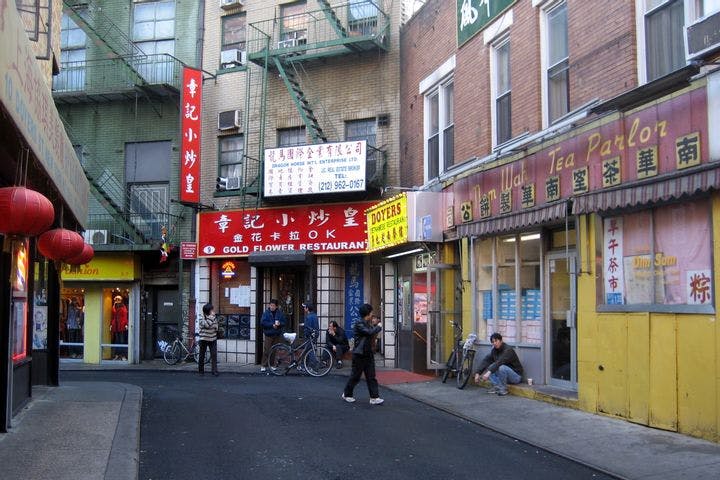Winter 2008
New York, Immigration 101
– The Wilson Quarterly
New Yorkers pride themselves on a tradition of successfully absorbing immigrants, even if the story is not always quite true.
To understand how New York differs from other cities in the way it deals with immigration, look no further than street parking. New York matter-of-factly bows to its infinite variety of ethnic groups by suspending alternate-side parking restrictions on no fewer than 34 legal and religious holidays, including the Hindu celebration of Diwali, the Muslim holiday of Eid al-Adha, the Catholic feast of the Assumption, the Jewish holiday of Purim, and the Asian Lunar New Year.
A “particular New York way” of absorbing vast numbers of new immigrants has taken root in the city, writes Nancy Foner, a sociologist at Hunter College, in part because New Yorkers have had so much practice in accommodation.
New Yorkers pride themselves on a tradition of successfully absorbing immigrants, even if the story is not always true.
For much of the 20th century, one in five New York residents was foreign born. That figure reached 41 percent in the 1910 census, a level it’s again approaching, at 36 percent in the last census. Those New Yorkers who weren’t born in a foreign country themselves are likely to have a relative who was, Foner writes.
As a magnet for immigrants, New York may be fortunate that its three million newcomers are not dominated by one group that can gang up on the others. The top three groups—Dominicans, Chinese, and Jamaicans—made up less than 30 percent of all foreign-born people in the five boroughs in 2000. Many immigrants still come from Europe. The countries of the former Soviet Union are the fourth-largest source. Even among blacks—a group often counted as if it were a monolith—there is tremendous diversity. More than a quarter of the city’s two million non-Hispanic black residents were born abroad.
New York also has historical advantages, Foner writes. Migration into the boroughs has been steady and diverse for more than a century, unlike some cities that have been surprised by a large recent influx after generations of little change. New York’s low-skilled immigrants have been balanced by an equal number of highly skilled newcomers. The city’s 51 city council seats, 65 state assembly positions, 25 state senate slots, and 59 community boards—with up to 50 members each—offer abundant opportunities for ethnic representation.
New Yorkers pride themselves on a tradition of successfully absorbing immigrants, Foner notes, even if the story is not always quite true. They are proud of their innumerable ethnic festivals and parades, their settlement houses, the huge City University of New York, and their ethnic politics. If, as some say, the Italians are yesterday’s newcomers and today’s establishment, maybe recent immigrants from Latin America and Asia are the “new Italians.” And with much of the country’s media industry based in New York City, what happens in New York may not stay in New York, but be subtly broadcast throughout the country.
* * *
THE SOURCE: “How Exceptional Is New York? Migration and Multiculturalism in the Empire City” by Nancy Foner, in Ethnic and Racial Studies, Nov. 2007.
Photo courtesy of Flickr/Wally Gobetz
